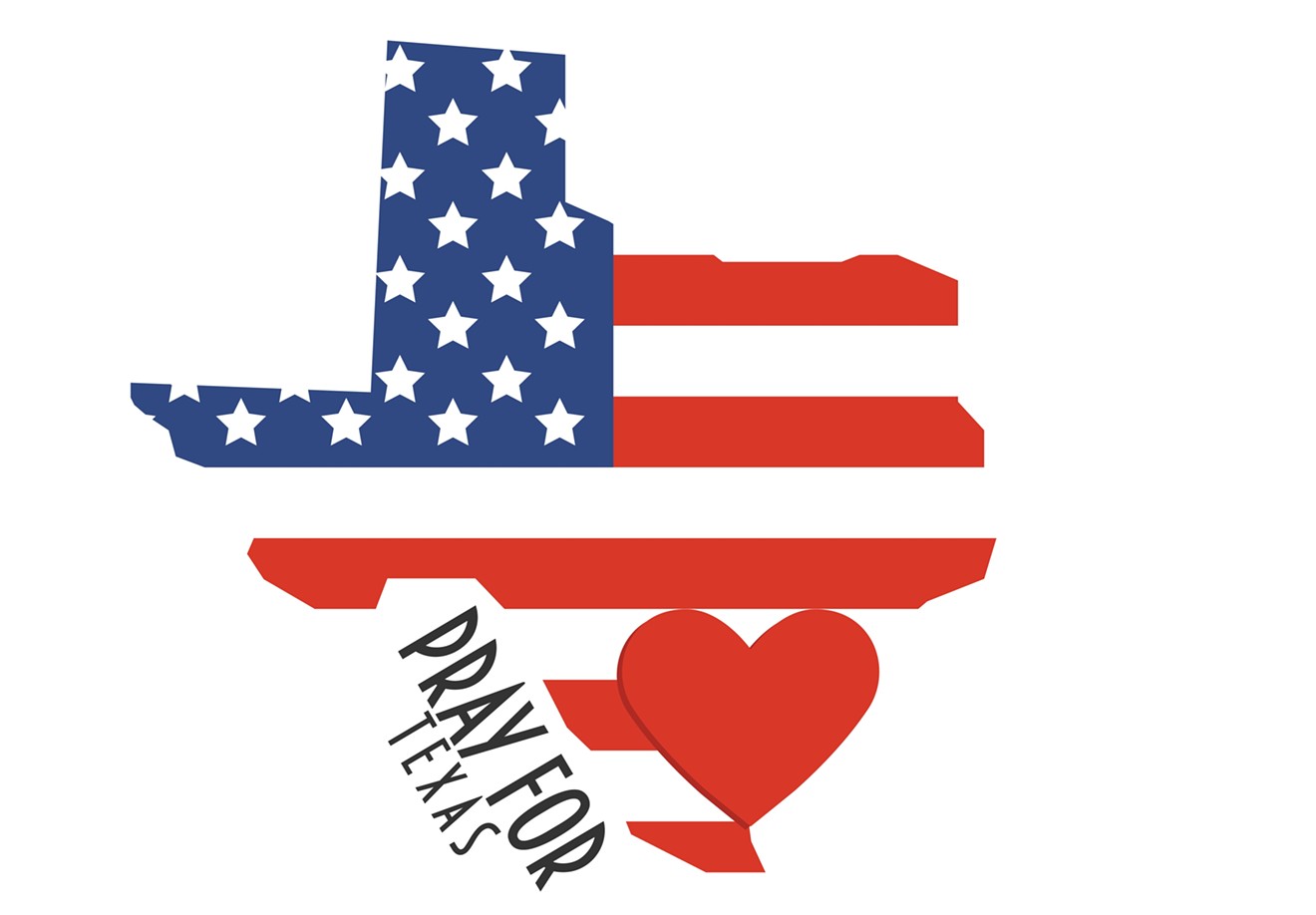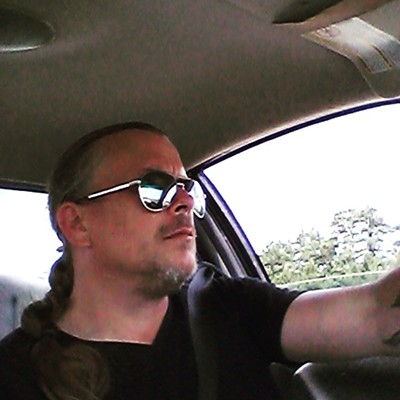That's not a flip joke. It's the grim reality that drew church leaders and members to a Denton police seminar for a lesson on what to do if someone tries to repeat what happened last month in Sutherland Springs. Armed with a Ruger AR-566 semiautomatic rifle and dressed in black tactical gear and body armor, Devin Kelley stalked the aisles of the South Texas town's First Baptist Church on a Sunday morning. He killed 26 people and wounded 20 others.
It was the worst mass shooting in modern Texas history, and it happened in a church. Naturally, church leaders are worried.
"We wanted to allow our members to carry, but the bishop disagreed," said Joe Davis, a member of St. Mark Catholic Church in Denton, who attended the seminar.
Kelley walked out of First Baptist and into a gunfight with Stephen Willeford, a neighbor and former National Rifle Association gun instructor armed with an AR-15 semiautomatic. The pair traded shots, and Willeford wounded Kelley, who jumped into his car and fled. After a brief chase, Kelley was found dead of an apparent self-inflicted gunshot wound to the head."We wanted to allow our members to carry, but the bishop disagreed." – Joe Davis, member of St. Mark Catholic Church in Denton
tweet this
Willeford told a reporter for the San Antonio Express News that he had heard the gunfire and reacted by racing toward the church with his gun in hand.
Willeford's reaction was instinctual, something Denton police Officer Shane Kizer stressed throughout his active shooter presentation Wednesday. “Failure to act is the worst thing you can do,” Kizer told the crowd of leaders and members from various churches across North Texas. Mostly white, older men, they filled the Denton Police Department Public Safety Training Center for the faith-based crime prevention training program.
Not long after Kelley's rampage, Kizer began receiving requests from church leaders who wanted to develop some sort of plan if a gunman appeared in their midst. Some had already armed their greeters, deacons and ushers or hired armed plain-clothed security guards to blend in with their congregations. Others wanted to allow worshippers to carry concealed guns but faced opposition from church elders.
The Denton Police Department has been hosting its annual Faith Based Crime Prevention Conference for several years now. Denton police Chief Lee Howell said Kizer developed the course specially for church security. The first was well attended and sparked more calls for training, so it became an annual summer seminar.
After the First Baptist Church shooting, the calls for training from the North Texas community increased, so the department hosted Wednesday's session. Kizer provided guidelines on how to develop and implement a safety plan within church budgets and offered a look at the profile of an active shooter. More than 100 people showed up to hear Kizer's “Denton Police Active Shooter Preparedness and Response” PowerPoint presentation and video.
“It is very unlikely that you will have one of these events at your place of worship, very unlikely,” Kizer told them. “But that being said, I think that this is the sign of the times. We're going to see more and more of this happening. It's too easy to go somewhere, plan something and wreak havoc in America, unfortunately. We're just not prepared for it.”
Kizer took the crowd back in time to Austin in the 1960s, when Charles Whitman, a 25-year-old former Marine sharpshooter, perched with rifles and other weapons on the observation deck of the Main Building tower at the University of Texas, killing 13 people and wounding 39 others.
“You can do a lot with a rifle if you're well trained,” Kizer said.
He touched upon other mass shootings over the years: the 1984 McDonald's mass shooting in San Diego, 21 dead and 19 injured; the 1986 Edmond, Okla., post office mass shooting, 14 dead and 6 injured; the 1991 Luby's restaurant mass shooting in Killeen, 23 dead and 27 injured.
“It's very important that we start identifying these people well in advance,” Kizer said. “There is really no method or pattern for their selection of victims. They're just going through that area that they have confined, trying to get as many as they can.”
Kizer said mass shooters' motives don't matter but there is a "pathway to violence" model the Department of Homeland Security developed to offer warning signs and advice about what should be done to try to prevent the next killing spree. Potential warning signs include increasingly erratic, unsafe or aggressive behaviors; hostile feelings of injustice or perceived wrongdoing; drug and alcohol abuse; marginalization and distancing from friends and colleagues; changes in work performance; sudden changes in home life and personality; financial difficulties; and observable grievances with threats and plans of retribution.
Kizer stressed that one searching for signs should look for the "totality of these circumstances" coming together and not just an individual experiencing one or two issues. He broke down the different stages an active shooter might experience on the pathway to violence, including grievances, the planning stage, the preparatory stage, and the probing and breaching stage, during which someone will “test the waters,” he said.
“You get to this point, and it's about to happen," Kizer said. "Most likely, you are not going to turn them away.”
The Department of Homeland Security says the only options when an active shooter initiates an attack and you're caught in the middle are to run, hide or fight. The problem is that the human reaction is to freeze when gunfire erupts, making for easy targets.
Kizer said those who decide to hide should stay low in case bullets pierce the thin walls of a workplace or church and to try to call or text 911. The best alternative is to run, but that's not always an option, especially if you don't have easy access to an exit.
“But if you choose to run, commit to this action,” according to a video Kizer played. “Remember, the police will be arriving to evacuate the wounded. Be sure to keep your hands up as you clear the building.”
Hiding doesn't mean you can't fight later. “If you are confronted by an active shooter, you have to assume that your actions are all that stand between yourself, your colleagues and great harm,” according to the video. “Fight for your life.”
One way to fight is to look around for a sharp or heavy object. An actor in the video knelt, picked up a pencil and gripped it like a knife. “You are taking action for your survival,” the video said, “so don't hold back.”
“I don't know if anybody has ever seen the movie Outlaw Josey Wales, but at the end, [Clint Eastwood is] telling them, 'When it comes down to it, you've got to get mean, and I mean mad dog mean,'” Kizer said. “You gotta find that other gear inside you, that other persona inside you to do whatever it takes to win because losing is not an option. ... Failure to act cannot be an option. Train yourself to react.”
Kizer said that as a police officer, he's constantly training to better his reaction times for extreme situations, and he tries to be in a constant state of alertness. If he forgets to take his handgun with him to church, he'll search for other objects in the church he could use as a weapon if an active shooter were to make an appearance.
“You gotta find that other gear inside you, that other persona inside you to do whatever it takes to win because losing is not an option. ... Failure to act cannot be an option. Train yourself to react.” – Denton police Officer Shane Kizer
tweet this
“This is a stool,” he said and picked it up like a weapon. “What can you do with it? Obviously you can do a lot of damage. ... What is the normal reaction when an object is coming at someone? It's either catch it or block it.
“I remember the old Superman TV series,” he said. “He would stand there and bullets would bounce off him, but when someone threw something at him, he would always duck.”
Kizer said some churches are sending their members for security training offered by places such as Gatekeepers Security Services in Aubrey, and others are hiring security guards.
Chuck Chadwick, the president of Gatekeepers, was at the seminar to discuss his "church security team certification and licensing program," which offers private security services, trains church volunteers as private security and licenses them with the state.
Chadwick said churches have a few options for armed “church security teams” in Texas. They could hire local law enforcement to provide security at a cost of $35 to $55 per hour. They could sign a contract with a local security provider at a cost of $18 to $30 per hour.
Churches could also use volunteers to provide security and spend about $1,000 per year, plus the cost of armed guard insurance. But the immediate liability then falls on the church and insurance company. They can even designate uninsured volunteers, which doesn't cost anything if nothing bad happens. It is legal under a Texas law that took effect in early September.
Kizer said whichever route churches decide to go, they need to have an emergency action plan in place and possibly a safety team of men and women to help develop emergency security procedures. They can also contact local law enforcement to check a church to determine where the weak points are in security.
More important, they always need to be aware of who's attending church, which can be done if they practice what Kizer calls, “active observance.” Some of this awareness can start when church volunteers in golf carts pick up people from the parking lot and continue with the door greeters, deacons and ushers interacting with the congregation.
“As a church, you are advertising for sick people to come to your church,” Kizer reminds them. “Don't be surprised if they show up.”
But maybe pray for them.













